More actions
Knighthood is a near-universal feature in most fantasy universes, and MassiveCraft also has their own version, centered around the Ailor people and their habit to produce a variety of Knighthood charters, as part of their aristocratic and class-divide themes. Knights are both a status symbol and enforcers of the law and the class divide in the Regalian Empire, and as such can offer unique roleplay experiences that other types of Characters cannot. Because the believability of Knighthood in the universe must be preserved, some fairly strict lore exists around Knighthood that can nonetheless expand roleplay opportunities in what additional functions it provides. To create unity and purpose in each Knight Order, strong concepts are used as a base-line, while Chapters of each Order provide additional specialization. Knighthood is a good way to get involved in pre-existing groups and activities. Since it guarantees roleplay, a group, and a reason to log on, it is appealing for everyone from new players to veterans. Knight groups organize their own internal social roleplay and are usually well-received by the player base as pleasant spaces. Knighthood also grants a unique ranking system for Characters to progress up the ladder of their Order and gain privileges for honesty and effectiveness in their Code. Knight roleplay requires reading, however, as Knight characters must follow their Codes or risk expulsion. Viridian Knighthood is recommended for players who are invested in making disciplined stickers for rules and regulations, for state-loyal chivalrous and aristocratic-oriented soldiers. Their aesthetics pair well with the traditional French or German Medieval Knight.
Becoming a Knight
Becoming a Knight can be done one of two ways, either through creating a Character who has Knighthood training included in their background, or through the In-Character procedure of going through being a squire for some determined amount of time. Before considering the options, it must be mentioned that Knighthood represents a commitment from the Player to also invest in the Lore and activities around Knighthood. While it can be a great starting point for new players, it does also come with pre-determined allies and enemies, and Knights are under strict supervision to behave by their Knight's Code, or be expelled from their Order. The most common method of becoming a Knight, is to write Knighthood into the backstory of a Character. All Knights who are trained from youth, enter Knighthood at the age of 13, and then graduate to become a Rank-Knight, from which point they are fully invested members, and can take their own Squires. Some players also create Squire Characters, usually around 18-20 years old, who are already quite advanced in their training, but haven't yet graduated. A far less common method, is to actually become recruited in roleplay on the server. While technically Knights should spend at least 8 years training, for the sake of fun roleplay and time availability, this process is sped up. The minimum requirement for an in roleplay recruited Squire to pass towards graduation, is 2 months of dedicated play (meaning, not switching to other Characters, or shelving said character for that period) while being a Squire to other in roleplay Knights of the desired Order. Once this 2 month period has expired, a Ticket may be made to Lore Staff, during which they will assess whether the Character would pass evaluation by the Order, and decide to reject or approve their Knighthood.
Designing a Knight
Knight Designs can sometimes be a little restricting, because Knighthood is a particular historical medieval fantasy trope that requires some adherence to the general Knighthood themes to remain believable. The quintessential design of a Knight, is on horseback with either a lance or a sword and a shield, and in heavy armor. While not every Knight must look exactly like this, it is important that Knights don't become rogues who wear clothes that fight with daggers, thus being so far removed from what is understood as a Knight in pop culture, that it might as well not be one. Players should gravitate towards this design: using melee weapons and/or shields, favoring chainmail or heavy armor, and appealing to class, dignity, or having a formal grace as is becoming of someone who is treated as pseudo aristocracy and supposedly one of the finest warriors in the Empire. Being on horseback is optional, since Mounts are a for-purchase-feature in Roleplay. Note, there are some general tips to Knight Design on each Order page (including exceptions), for example, Lothar Knights prefer ranged weapons over melee weapons and light armor, or that Aelrrigan Knights frequently use Magic and never use horses. For further design ideas, refer to the individual Order pages. Lastly, you should primarily aim to play a Knight and stay with the Order or exchange to a different Knight Order if the opportunity arises. It is generally considered bad optics to play a Knight with the intended purpose of being ejected in a short period of time.
Knight Orders
Knighthood is split between a variety of Orders which all represent some kind of central theme or thought. Below are listed all available Knight Orders, and a very quick summary of their work, while also linking to their individual Pages for more detail. While most Knight Orders function roughly the same and can even allow for members to change between Orders, the Argentum and Senleya Orders are unique, in that neither of them are based on from the Regalian Empire itself. While the Senleya Order can legally operate in Regalia, the Argentum Order cannot, which is generally seen as the "evil" Knight Order. How this plays out in Roleplay, is explained on the individual Pages. Before choosing a Knight Order, it may pay off to skim each Order page to get the right choice for you.
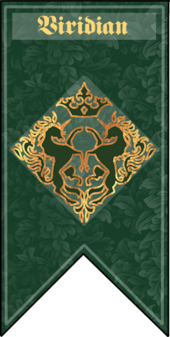
|
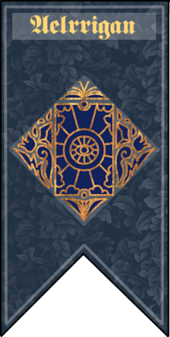
|
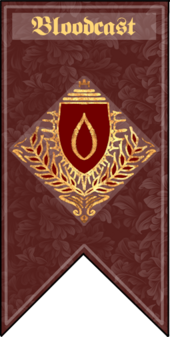
|
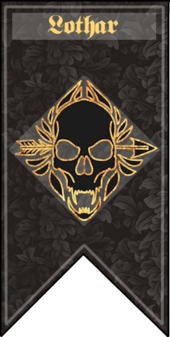
|
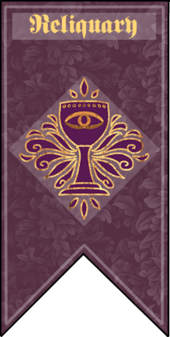
|
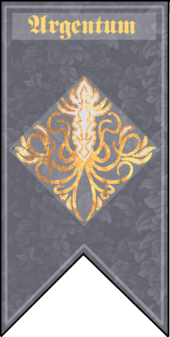
|
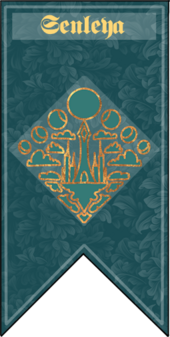
|
|---|---|---|---|---|---|---|
| The Viridian Order is the grandfather of all Regalian Knight Orders, popularizing the term Knight, and holding the other Orders to a high standard of Honor. | The Aelrrigan Order is an Order of Knights and Mages who seek to both protect and regulate the Mage population to avert doom in the world from Prophecy. | The Bloodcast Order rose from instability in the Viridian Order, turning away from the wealthy and protecting the poor as the essential Hedge Knights. | The Lothar Order exists as an anti-Magic and anti-Occult radical Knight Order ostensibly to hunt Vampires, but to extend that destruction to all Occult. | The Reliquary Order started as an attempt to keep the Regalian Empire from tearing itself apart from religious conflict, to protect all faiths and believers. | The Argentum Order is the only Knight Order outside of the Regalian Empire, serving the Dread Empire to cause instability and destruction to Regalia. | The Senleya Order is an all-Elven Order both inside and outside the Regalian Empire, focused on pushing back the corruption of the Void and its Arken. |
Privileges and Limitations
All Knights gain certain social privileges, as well as Knighthood expectations. The expectations form through a code of conduct which requires Knights to react a certain way to some roleplay scenes, or to avoid doing a particular thing. Privileges are unique things that Knights are allowed to do that no other type of Character can do (though some overlap may exist with for example Noble House Guards). Each Knight Order is subject to the so-called "Common Knight Code", while each Order also has a separate code of conduct called the "Internal Code". Failing to live up to these Codes can result in an investigation, demotion, and in the worst case scenario, expulsion from the Order. Some Orders, like the Lothar, are exceptionally sour towards traitors, and may issue a hit-squad to take out anyone who abandons their duties. First follows the Common Knights Code. Note, because the Argentum Order is not part of Regalia, it does not need to follow any of these rules. The Senleya Order is technically also not part of Regalia, but operates within Regalia, and has agreed to uphold these rules so that they should be allowed to exist. Below that follows the Common Knight Privileges. Note, these privileges can be abused in bad faith, which in itself would be considered a Common Knight Code violation, so usage of these privileges should be measured and usually aimed towards duty rather than personal pleasure. Obviously, because the Argentum Order is not part of Regalia, none of these privileges apply to them.
Common Knights Code
- All Knights must be loyal to the Emperor of Regalia above all, and loyal to the Regalian State. This does not mean they have to be loyal to all leaders, as sometimes, the Empire must be protected from its own agents.
- All Knights are disallowed from attacking unarmed or defenseless people. That being said, if someone intentionally throws their weapon, or turns their back to taunt, this obviously does not apply as it is tactics.
- All Knights may not act in any way to defame, degrade, or humiliate their Order, or engage in any actions that would bring shame on them or their fellows, or show weakness in the face of adversity, or combat.
- All Knights are allowed to enforce Regalian Law, but do not have to if they opt out. They must however abide by Regalian Law, though sometimes the Law can be bent, doing only what any might think the Emperor forgives.
- All Knights may not lie, deceive, or cheat in any activity in public or private. That being said, not all truths need always be said, and not all questions need to be answered if it is not honorable or virtuous to do so.
- All Knights are expected to give alms to the poor, and to protect the weak, while obeying their own Internal Code, and the purpose of their Knighthood. Inactivity and sloth to duty is considered a personal failing.
Common Knight Privileges
- All Knights are permitted to wear armor and weapons anywhere in Regalia, including Temples and burial sites and private homes, with the exception of the Imperial Palace, where Armor and Weapons must be confiscated.
- All Knights should be treated as aristocracy even if they are not. Male Knights are addressed as Ser or Sera, female Knights as Dame or Sera, and non-Binary or Unisex Knights as Sera. They also gain a stipend for Knighthood.
Rank Up Privileges
Additional privileges can be gained from Ranking Up as a Knight. Each Knight Order has 5 Ranks starting from Rank-Knight to Knight-Captain, Knight-Major, Paladin, and finally Regal Knight, these ranks being consistent across all Knight Orders, with the exception of the Argentum Order, which has its own internal rules for hierarchy within the Order found on its page. Assuming all Knight start at Rank-Knight, at minimum one month after having played said rank consistently, a Knight Player may request a review for a Rank-Up in a Staff Ticket. Lore Staff will evaluate based on rank requirements as followed. The first Rank-Up is dictated by how well the Staff believe a Character is following the Knight's Code and embodying the Order's themes and activities. The second Rank-Up is dictated by how far the Player has invested in the "job activities" of the Knight Order and brought them to completion in some satisfactory degree. The third Rank-Up is dictated by how much the Character is a necessary component to the Community within the Order to function. The fourth Rank-Up is dictated by whether the player is able to generate content and activities for the Knight Community they are in without necessarily part-taking themselves. The Fifth-Rank up requires some indetermined service to both the whole MassiveCraft Community, and the individual Knight Community that we cannot specify at this time. Each time a Rank-Up is approved, the player may choose one of the following Privileges that will be granted to them or their character.
- Privilege 1 grants the Knight Character a rent-free Estate that is about the size of 2x Rental Houses that World Staff will do interior for, if it is requested.
- Privilege 2 grants the Knight Character a personal/family crypt either in a graveyard or in the countryside roads which can be used as a secret base or lair.
- Privilege 3 grants the Knight the Ability to consult their Order's personal archives which may contain deep-lore or useful information to ongoing activities.
- Privilege 4 grants the Knight the right to request a personal Artifact designed for their Character which cannot be taken from them (unlike normal Artifacts).
- Privilege 5 grants the Knight protection against trouble for breaking certain laws, notably all of Low Law, and allows them to cast Magic freely without restrictions.
- Privilege 6 grants the Knight the ability to self-generate 1 Divinium or 1 Artifactspark per month that does not stack up and does not carry over into other months.
Transferring Knight Order
Transferring Knight Order is a somewhat controversial subject for Knights, but one that can actually occur for variety of reasons. Historically speaking, many Viridians who have grown disillusioned with their Knight Order, abandoned the Viridian Green and took up the Bloodcast Red, to become Hedge Knights instead. There are a number of transfer possibilities for each Order, which can be accepted for a variety of reasons. It should be noted that not all Orders accept transfers, and that such a decision should not be chosen lightly, as it cannot be reverted in short order. Knights may also not transfer between Orders constantly, and should aim for no more than 2 Transfers in total. Transferring can be done by submitting a Lore Staff ticket and treating it as an In Character request for a transfer in a letter, thus citing all the reasons for the transfer. Any Ranks acquired from previous Orders will be reset, but the privileges gained will not be lost. Below is a list of all Orders and their transfer opportunities. Some internal limitations may apply depending on Chapters, for example, while Aelrrigans can transfer to the Reliquary Order, only Chatellane Chapter Reliquary Knights may have Magic, so they must become Chatellane. Transferring Order has no direct negative consequence, like expulsion from the Order for failing to meet requirements might have, though a Character should still expect In Roleplay ridicule and verbal abuse from ex-colleagues.
| Viridian Order | Aelrrigan Order | Bloodcast Order | Lothar Order | Reliquary Order | Argentum Order | Senleya Order |
|---|---|---|---|---|---|---|
|
|
|
|
|
The Argentum Order does not permit Transfers to any Regalian Order, but does accept Transfers from any other Order, if these Knights would be classified as Fallen Knights who have turned to "evil". The Argentum Order in part exists specifically to seduce and or corrupt Regalian Knights to their side. |
The Senleya Order lore is currently not yet written, so it does not allow for any Transfers. As this is a strictly Elven-based Order however, only Elves and Half-Elves may Transfer to this Order in the future, which no real limitations on Planar Alignment or previous Knight Order membership (tentative). |